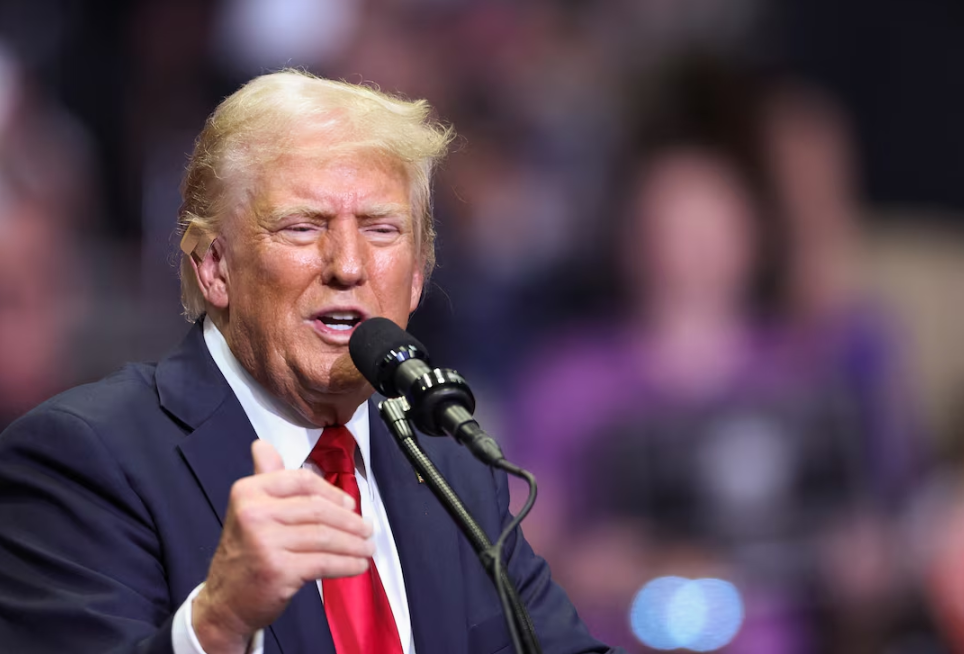In the heart of North Carolina, former President Donald Trump held a rally that captured national attention, sparking discussions about his ongoing political strategies and the future of the Republican party. This event was not just another rally but a calculated move against Vice President Kamala Harris, setting the stage for a potential showdown in the upcoming elections. Let’s delve into the details of this rally, the rhetoric used, and the broader implications for American politics.
The Trump Rally Context and Significance
North Carolina has been pivotal in recent elections, often swinging between Republican and Democratic control. Trump’s choice of this location underscores the state’s importance in the 2024 elections. By holding a rally here, Trump aims to energize his base and reclaim the state, which has been a battleground in the political arena.
The rally’s focus on Vice President Harris is telling. Trump’s criticisms and the issues he raised will likely shape the narrative leading into the next election cycle. By targeting Harris, Trump is setting the tone for a potential face-off, highlighting key issues and preparing his supporters for a challenging campaign.
Key Themes and Messages from the Rally
Trump heavily criticized the current administration’s economic policies, arguing that they have led to higher inflation and job losses. He positioned himself as a champion of economic recovery, promising a return to the prosperity that characterized his administration. This message resonated with many attendees, particularly those concerned about the rising cost of living and job security.
Immigration Policies and National Security
Immigration was another focal point, with Trump lambasting the Biden administration’s approach. He claimed that the current policies have led to increased illegal immigration and posed a threat to national security. This rhetoric plays well with his base, who prioritize strong border security and law enforcement.
Healthcare and Pandemic Response
The rally also touched on the handling of the COVID-19 pandemic. Trump criticized the continued restrictions and mandates, advocating for more personal freedom and less government intervention. He contrasted his administration’s approach to the pandemic with the current administration’s, appealing to those frustrated with ongoing public health measures.
The Role of Media and Public Perception
Media portrayal of the rally has been mixed, with some outlets highlighting Trump’s strong rhetoric and others focusing on the controversial statements made. The rally’s media coverage reflects the polarized nature of American politics, where different outlets often present vastly different perspectives on the same event.
Public Reaction and Polling Trends
Public reaction to the rally has been split along partisan lines. Supporters see Trump as a strong leader challenging the status quo, while critics view his rhetoric as divisive. Polling data suggests that while Trump maintains strong support among Republicans, he faces significant challenges in winning over independent and swing voters.
Implications for the Republican Party
The rally highlighted ongoing divisions within the Republican Party. While many attendees and speakers expressed strong support for Trump, there are factions within the party that are wary of his influence. The event underscored the challenge the party faces in uniting its base while appealing to a broader electorate.
The Role of Other Republican Leaders
Other prominent Republicans, such as Ron DeSantis and Nikki Haley, have been positioning themselves for potential presidential runs. The rally served as a reminder that while Trump remains a dominant figure, the field is far from settled. The actions and statements of these leaders in the coming months will be crucial in shaping the party’s future direction.
Looking Ahead: The 2024 Election Landscape
As we look towards the 2024 elections, potential match-ups and key issues are becoming clearer. Trump’s focus on economic policies, immigration, and national security suggests these will be central themes in his campaign. Meanwhile, the Democratic Party is likely to emphasize healthcare, social justice, and climate change.
The Role of Swing States
Swing states like North Carolina will be critical in determining the election outcome. Both parties are likely to invest heavily in these states, using rallies, advertisements, and grassroots campaigns to sway undecided voters. The strategies employed in these states could very well decide the next president.
Conclusion
Trump’s North Carolina rally was more than just a political gathering; it was a strategic move aimed at shaping the narrative for the upcoming election. By focusing on key issues and targeting Vice President Harris, Trump is laying the groundwork for a potential comeback. As we move closer to 2024, the dynamics within the Republican Party and the broader political landscape will continue to evolve. Regardless of one’s political stance, it’s clear that the upcoming election will be a pivotal moment in American history.





